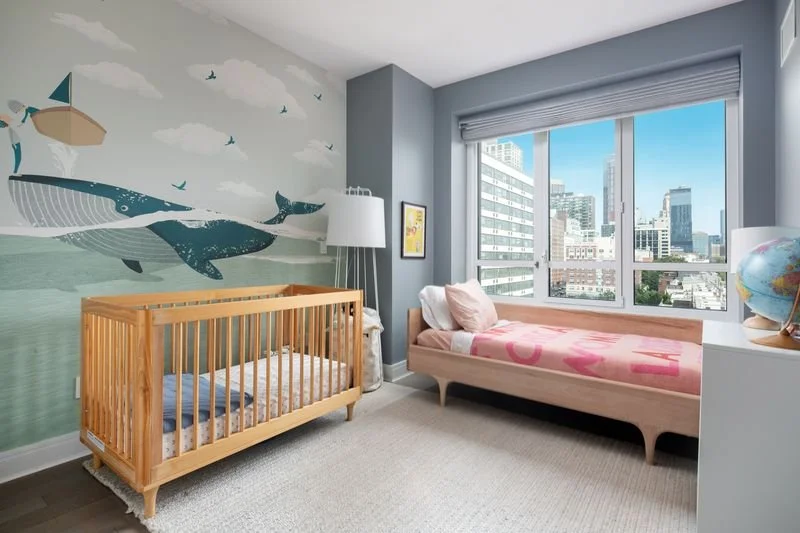6 Surefire Ways to Maintain the Structural Integrity of Your House
Maintaining the structural integrity of your house is crucial not only for the safety and comfort of its inhabitants but also for preserving its value over time. Structural integrity involves every part of the house, from the foundation to the roof, being in good condition and functioning as intended. Weather, a pervasive and often harsh element, plays a significant role in the wear and tear of a building. In places like Gig Harbor, WA, where the climate includes significant rainfall and moisture, these weather conditions can particularly challenge a home's structural health. Understanding how to protect and maintain your house in such an environment is essential for any homeowner.
Let’s get started:
1. Regular Roof Inspection and Maintenance
The roof of your house acts as the first line of defense against weather elements, shielding your home from rain, wind, and debris. Over time, these elements can cause wear and tear that, if not addressed, may lead to more serious damage like leaks or structural weakening. Regular roof inspections can catch problems such as missing shingles, cracks, or other damage before they escalate into more significant issues that are costlier to repair.
Given the weather conditions in Gig Harbor, it is wise to engage professionals who understand the local environment. An experienced Gig Harbor, WA roofing company can provide specialized knowledge and services tailored to address the unique challenges posed by the local climate. These experts can offer advice on the best materials and maintenance practices to extend the lifespan of your roof and, by extension, your entire home.
2. Foundation Checks
The foundation of your home is just as critical as the roof when it comes to maintaining structural integrity. It supports the entire weight of the building, and any weakness in this area can lead to serious structural problems, including the risk of collapse. Homeowners should be vigilant for signs of foundation issues, such as visible cracks on the floors and walls, doors that won't close properly, or visible gaps around window frames. These symptoms signify shifting or settling of your property’s foundation, which might require professional attention.
Regular checks by a qualified structural engineer can help ensure that any potential problems are identified and addressed promptly. Preventative measures - ensuring proper drainage around the foundation and checking for vegetation growing too close to the house - can also help maintain the foundation's integrity.
3. Proper Drainage Systems
Effective drainage systems are essential for protecting a house's foundation and walls from water damage. Poor drainage can lead to water pooling around the foundation, which, over time, can weaken the structure and cause water to seep into basements or crawl spaces. Maintaining gutters and downspouts is crucial; they should be kept clear of debris to allow for the free flow of water away from the house.
Additionally, homeowners should consider the landscape grading around their homes. It's important to ensure that the ground slopes away from the foundation to prevent water accumulation. Installing additional solutions such as French drains or sump pumps might be necessary in areas prone to heavy rainfall, like Gig Harbor, to effectively manage water and protect the home. These systems help to direct water away from the house and greatly reduce the risk of moisture-related damage to the structure.
4. Moisture Control
Managing moisture levels within a home is vital to preserving its structural integrity, especially in regions with high humidity or excessive rainfall. Excessive moisture can lead to a host of problems, including mold growth and wood rot, which compromise the strength and safety of the structure. Utilizing dehumidifiers and ensuring that your home has adequate ventilation are proactive steps to control indoor humidity levels effectively.
In addition to mechanical aids, it's crucial to ensure that all seals on windows and doors are intact to prevent external moisture from infiltrating the home. Regularly checking and replacing caulking and weatherstripping can seal out moisture effectively. Proper insulation also plays a key role in moisture control by stabilizing the interior environment and reducing the chances of condensation, which can lead to mold and mildew buildup.
5. Pest Inspection and Mitigation
Pests such as termites and carpenter ants pose a significant threat to the structural integrity of a house. These creatures can silently degrade the strength of wooden structures, potentially leading to severe damage if not addressed in a timely manner. Regular inspections by a Tampa pest control company are crucial to detect infestations early and mitigate their impact..
If pests are detected, hiring a professional extermination service is essential to effectively address the issue. Preventative measures, such as treating wood with pest repellents and ensuring that the ground around the home’s foundation is clear of wood debris and excessive plant material, can also help deter pests. Keeping basements, attics, and crawl spaces well-ventilated and dry reduces the likelihood of pest infestations, as these creatures thrive in damp, dark environments.
6. Routine Maintenance of Exterior Elements
The exterior elements of a house, such as paint, siding, and windows, require regular maintenance to retain their protective and aesthetic functions. Peeling paint, for example, is not just an eyesore; it can also expose underlying materials to the elements, leading to deterioration and the need for more extensive repairs. Regularly painting and sealing exterior surfaces can help protect these materials and extend the life of the home.
Similarly, inspecting and repairing siding and windows helps preserve the envelope of the house. Damaged siding or leaky windows can lead to water infiltration, energy loss, and increased susceptibility to pests. By addressing these issues promptly, homeowners can maintain their home’s appearance and functionality, which are crucial for long-term preservation and value retention.
Conclusion
Maintaining the structural integrity of your house is a continuous effort that requires attention to various components, from the roof down to the foundation. Each element plays a critical role in protecting the overall structure and ensuring the home remains a safe and comfortable place to live. Proactive maintenance not only helps avoid costly repairs but also contributes to the property’s long-term value and appeal. Residents of Gig Harbor, WA, face unique challenges due to the local climate, which emphasizes the need for tailored strategies to address moisture, pests, and weather-related wear and tear. By implementing regular inspections, maintenance routines, and improvements as needed, homeowners can effectively safeguard their investments and enjoy peace of mind. Ultimately, the effort put into maintaining a home’s structural integrity pays dividends in ensuring its longevity and enhancing its resale value.






